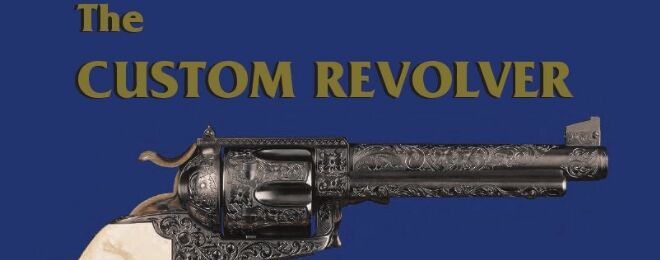The Custom Revolver likely is not a new title to most of TFB readers, as it is a classic published almost 20 years ago. In its hardcover form, it quickly went out of stock and its qualities and rarity made it a collectible. It may seem an odd choice to review such a dated, albeit extremely valuable, publication, but the idea to write about this book came from 2 recent events:
- the late realization that a digital (Kindle) version has long been available on Amazon;
- the urge to even the score with revolver lovers, after a Best Revolver list was “written by a guy who believes a defensive handgun should be a semiautomatic and be made of polymer”.
To compensate for the second point above, this article is written by a guy who thought that a .454 Casull revolver was a good choice as a first handgun. Feel free to pass judgment on the love for big bore revolvers of yours truly, and on his sanity as well, based on this piece of info.
Now back to the book. Please note that we’ll focus on the Kindle version, the only one currently available without forking out a few hundred dollars, therefore there will be no references to the overall quality of the printed format.

The Custom revolver, cover. The Keith No. 5 reproduction in all its beauty. Screenshot from the Kindle edition.
The Author: Hamilton S. Bowen
Hamilton Bowen is a well-known name to anyone with even the slightest interest in big bore revolvers. His gunsmith business, Bowen Classic Arms (BCA), was started more than 30 years ago and it has heavily contributed to shaping many trends in the niche of custom revolvers.
Online discussion boards, especially the ones with a focus on Ruger or single action revolvers, abundantly feature references to Mr. Bowen’s work. Widespread appreciation goes not only to the workmanship but also to the integrity and customer service attitude which are standard in BCA.
BCA website dedicates a brief page to the bio of the founder and how the shop came to be, an introduction which is also published on “The Custom Revolver”. What may catch the attention, other than the list of accomplishments in the gunsmithing business, is the course of studies in History and English which preceded the dedication to firearms. Reading the book, it becomes clear that Mr. Bowen is not only a skilled craftsman but also a highly educated student of arms history and professor of his own art. A gunsmith and an equally proficient writer, he most definitely knows how to talk to the readers and engage them in a fascinating journey. The author takes them to discover each seemingly minor detail of the revolver making art and teaches them how to appreciate its value.
The Custom Revolver: CONTENT
A full table of contents can be found on the dedicated page of the BCA website, here we’ll offer a brief overview of the topics.
The narration starts in medias res by introducing to the reader the Elmer Keith’s No. 5 revolver, a highly modified .44 Special Colt Single Action Army (SAA) model, crafted in 1929 and since then recognized as the quintessential and most influential custom revolver. A reproduction of the highly ornate revolver was commissioned to BCA. The chapter first details the challenges faced to find sources on the actual customization performed on Elmer Keith’s original, at the time inaccessible for direct examination. The author then goes into details on the works performed, together with an ensemble of highly skilled craftsmen, on a United States Patent Fire-Arms (USPFA, later USFA) SAA model, chosen for its quality and accurate faithfulness to the Colt originals. The resulting masterpiece graces the cover of the book and fully represents the range of potential modifications that shooters can request to make a revolver model truly their own.
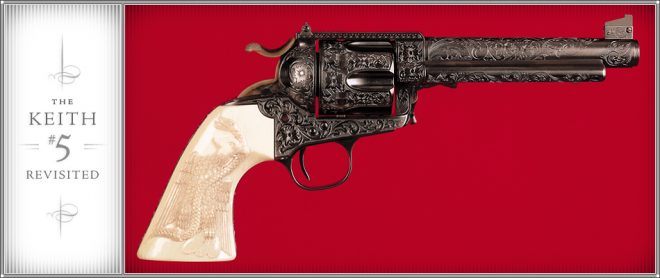
The Keith No.5 reproduction as shown in one of the central color plates of the book. Photo from the Gallery of Bowen Classic Arms website.
The journey through the customization process then takes the reader to first have a look at the “raw material” of the commercially available revolvers. Mr. Bowen offers an overview of Ruger, S&W and Colt (and replicas) models, showing features, strengths and weaknesses of each item and even of different generations of a single revolver.
A pattern emerging from the chapter and becoming a thread connecting the whole book is the appreciation for, now lost, manufacturing practices and skills of the industrial gunmaking of the early 1900s. While technological advances allow the use of much more powerful cartridges than a century ago, some details, hand finishing steps and surface treatments have disappeared in the name of cost-efficient mass manufacturing. BCA endeavors to modify the aforementioned raw material in order to mate the modern technology to the style and nicety of early firearms. An example of such a process is a Ruger Redhawk chambered in .50 AE and graciously patterned after the S&W M1917.
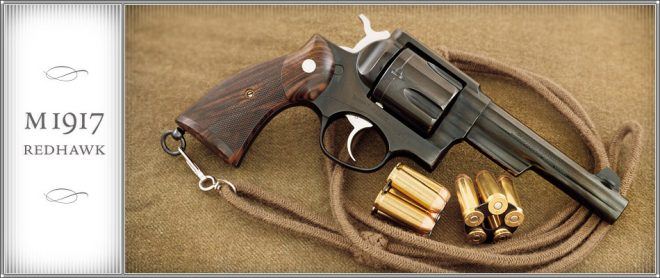
The M1917 inspired .50 AE Redhawk as shown in one of the central color plates of the book. Photo from the Gallery of Bowen Classic Arms website.
The book then goes into deeper details by analyzing each main element of the revolver anatomy, highlighting features, differences between models and customization potential. Style and finishes are also examined. The attentive eye of the master gunsmith does not spare any surface, visible or hidden, of the wheelguns, offering interesting insights on a variety of subjects that the average revolver user may ignore. The author provides abundant black & white photos to support his writing and several examples of BCA projects are shown in each chapter.
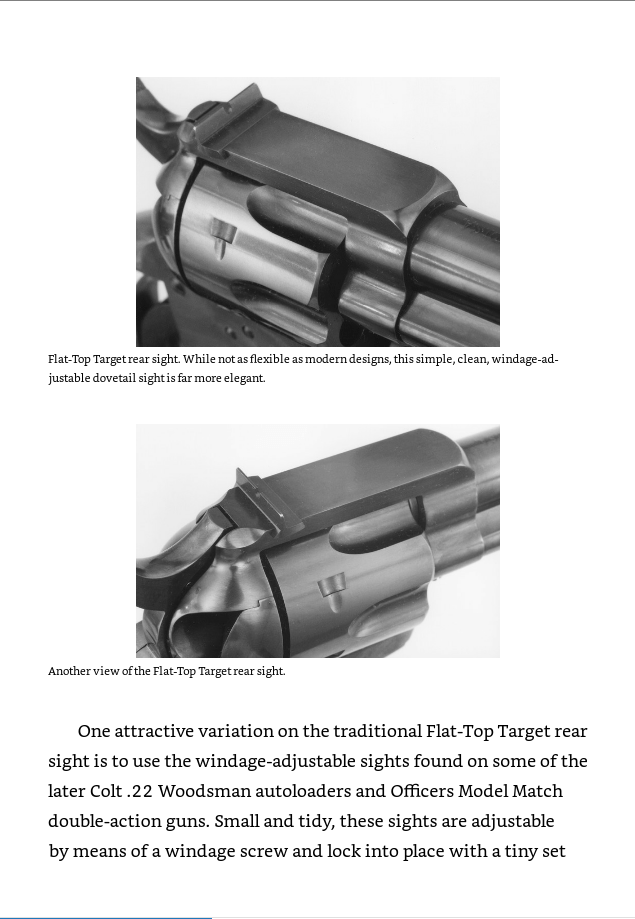
Sample page. Screenshot from the Kindle edition.
Before an overview of revolver cartridges, modern and obsolete, a full chapter is dedicated to one-off projects truly showing the potential of BCA’s work. Possibly the most peculiar example is a Ruger Redhawk chambered in a purposely developed .577 black powder cartridge inspired by British colonial revolvers.
THE CUSTOM REVOLVER: Overall impressions
It’s probably obvious that yours truly, who bought the hardcover copy when it was still available from BCA and recently bought the Kindle version as well, loves this book. The following lines, however, will try to convey a fair assessment on The Custom Revolver.
What does the book offer?
The Custom Revolver was written with the stated intention of becoming a classic. It definitely succeeded in this mission, by becoming the most complete, in-depth resource on the topic. The writing is pleasant, witty and engaging, making an easy read of topics which may otherwise easily sound boring or trivial.
While the author relates each of the points he examines to his own, extensive, body of work, The Custom Revolver has a “universal” value and it’s not simply a showcase of BCA’s art. Insights on all of the variables affecting the performance of this class of firearms, for example, can be applied to any revolver.
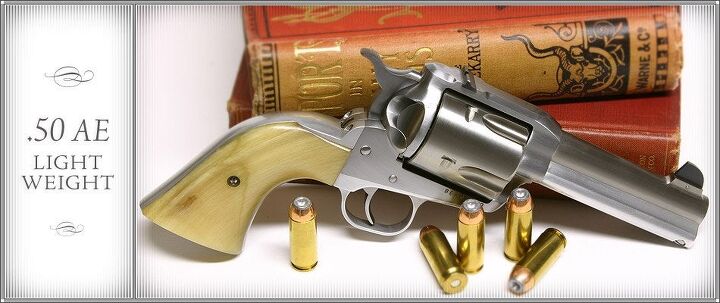
A 26 oz, Titanium and Aluminum infused, .50 AE Ruger Blackhawk, as shown in one of the central color plates of the book. Photo from the Gallery of Bowen Classic Arms website.
Many different patterns of revolvers are shown, however, the main focus appears to be on big bore conversions, for bear defense or hunting purpose. For this role, the author openly declares his preference for the versatility of .45 Colt, from mild to full power, modern, hunting loads. This is reflected in documenting the now decades-old trend of converting 6-shooters to beefier 5 round cylinders. A practice of BCA and few others, which has also reached major manufacturers.
What you won’t find in the book
A few of the customization works discussed, such some of BCA’s prized sights, may be applicable to personal defense revolvers, but readers interested only in concealed carry revolvers may have to look elsewhere.
The text was first published in 2001, some models and calibers now relatively common are not featured simply because they did not exist at the time of writing. The focus is also predominantly on American revolvers, British models of colonial times are briefly referenced and so are, generic, Italian replicas. One is left to wonder if some of the lost arts from the American golden age of gunmaking may still survive in European quality models such as Manurhin, Korth or Janz.
Who should read The Custom Revolver
- Anyone who likes revolver, and if you don’t care about single action models, you may start liking them more than you thought possible after few pages;
- Anyone who likes beautiful things;
- Anyone interested in firearms manufacturing and mechanics;
- Anyone who has 10$ to spare (that’s the price of the Kindle version – an incredible bargain)
- Pete.
Who should NOT read The Custom Revolver
- Whoever thinks that liking firearms with limited tactical use would degrade them to Fudd level;
- Anyone who is worried that this could be a gateway drug ending in severe dents on their bank account.
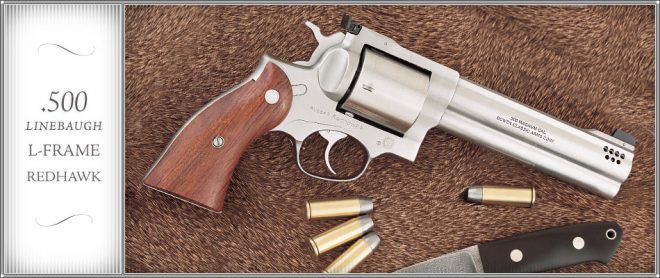
A beefy yet extremely elegant .500 Linebaugh Redhawk with full underlug barrel machined from a 2″ bar stock in the style of S&W L-frame models; as shown in one of the central color plates of the book. Photo from the Gallery of Bowen Classic Arms website.
THE CUSTOM REVOLVER: Conclusion
There isn’t much left to say other than repeating that such valuable content at the price of the digital version should be a no-brainer.
Whether you knew already this classic or this article made you curious about it, you may be interested to know that Mr. Bowen confirmed that a second edition is in the works. This will be also revised as it will feature additional unique projects, some of which are still in progress, therefore a timeline is not yet available. Stay tuned.
On a side note, he’s also writing a not yet better defined book on fine .22s, as hinted on this page of his website where he mentions a few firearms he’s willing to trade for work or purchase.
We are committed to finding, researching, and recommending the best products. We earn commissions from purchases you make using the retail links in our product reviews. Learn more about how this works.
 Your Privacy Choices
Your Privacy Choices
